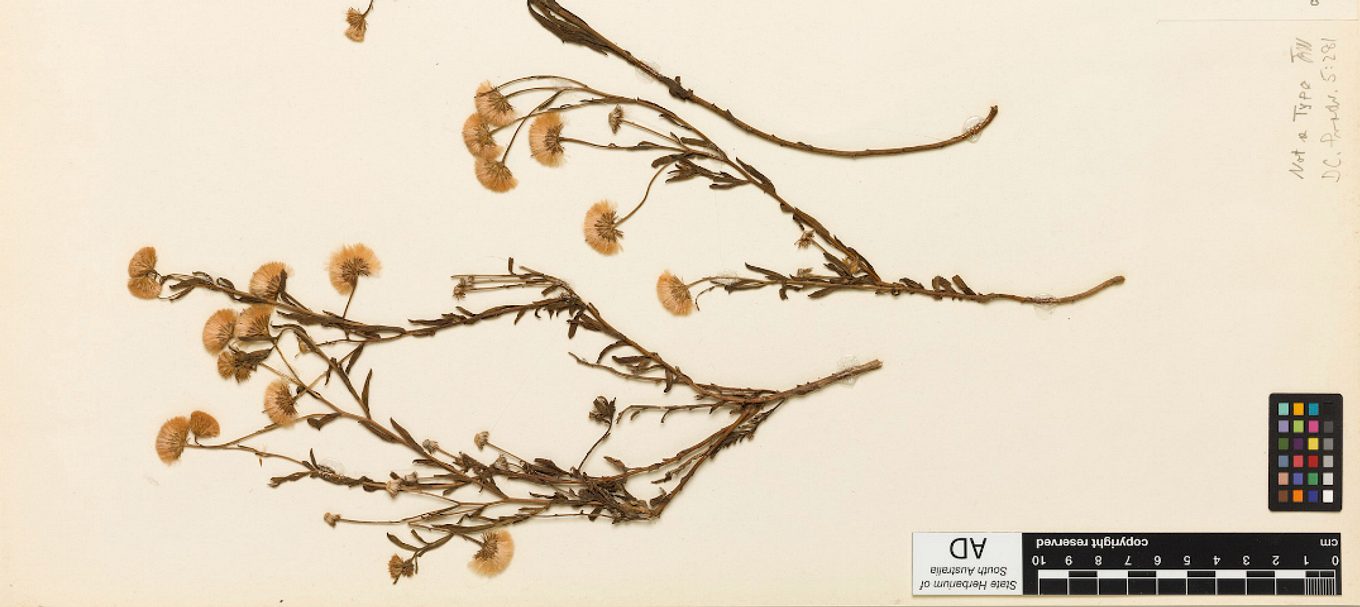
5 of the oldest plant specimens in SA
Like trawling through old photo albums, there’s something fascinating about delving into the history books and getting a picture of decades past.
You might be into old buildings, historical figures, inventions or fashion. Or maybe you’re a green thumb and the history of plants gets you digging for more information.
With the help of our friends at the State Herbarium of South Australia – the experts in Australia's native and naturalised plants, algae, fungi and lichens – we bring you six of the oldest specimens in their collection.
But don’t worry if the thought of musty pages of plant specimens doesn’t tickle your fancy, hopefully the stories behind them will.
1.Tall fuzzweed (Vittadinia scabra)
During Captain Cook’s first voyage between 1768 and 1771, he set sail to the South Pacific Ocean to observe Venus’ passage between the earth and the sun.
He pulled up on the east coast of Australia with botanists Joseph Banks and Daniel Solander in tow, and in 1770 they found this little beauty tucked away about 500 kilometres north of Brisbane, in a spot they named Bustard Bay.
Banks was a follower of Carl Linnaeus, who developed the binomial (two name) form of naming plants, and he employed Solander, Linnaeus’ student, to help him on the voyage to collect and name plants in what was then an unknown part of the world. Banks is actually pictured on Australia’s early $5 notes – and the Banksia plant is also named after him.
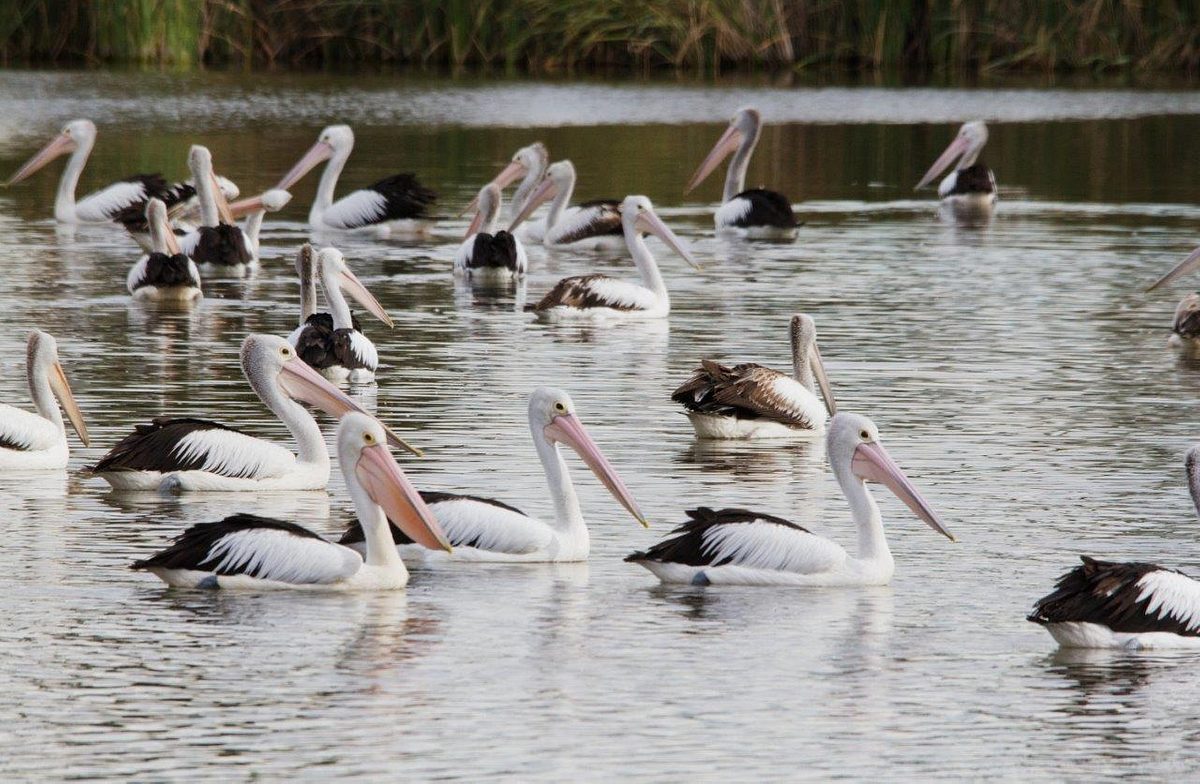
2. Indian beech (Pongamia pinnata, now known as Millettia pinnata)
This specimen of Indian Beech has had an interesting journey since its discovery in 1819 in Rockingham Bay, Queensland.
Botanist and explorer Allan Cunningham had spent two years collecting plants in Brazil, before scoping out the Sydney region, and then heading up to northern and north-western Australia as part of Admiral Phillip Parker Kings’ four voyages between 1817 and 1821 where he discovered this tree.
The plant is found throughout Asia, northern Australia and the Pacific, and its pods are rich in an oil that has potential as a biodiesel fuel.
If you look closely at this specimen and its backing sheet, you’ll see a tear and dark soot – evidence of an intensive period of World War II bombing in London in 1939, when the specimen was held at the British Museum of Natural History.
The botanical collection sustained significant fire damage, particularly the specimens discovered by Banks and Solander, and needed a lot of restoration work to be salvaged.
At the time, an operation was underway to protect much of the country’s historic specimens by trucking it out to safe houses in the British countryside. The herbarium of the Botanic Gardens in Berlin was not so lucky though – it was almost completely destroyed.
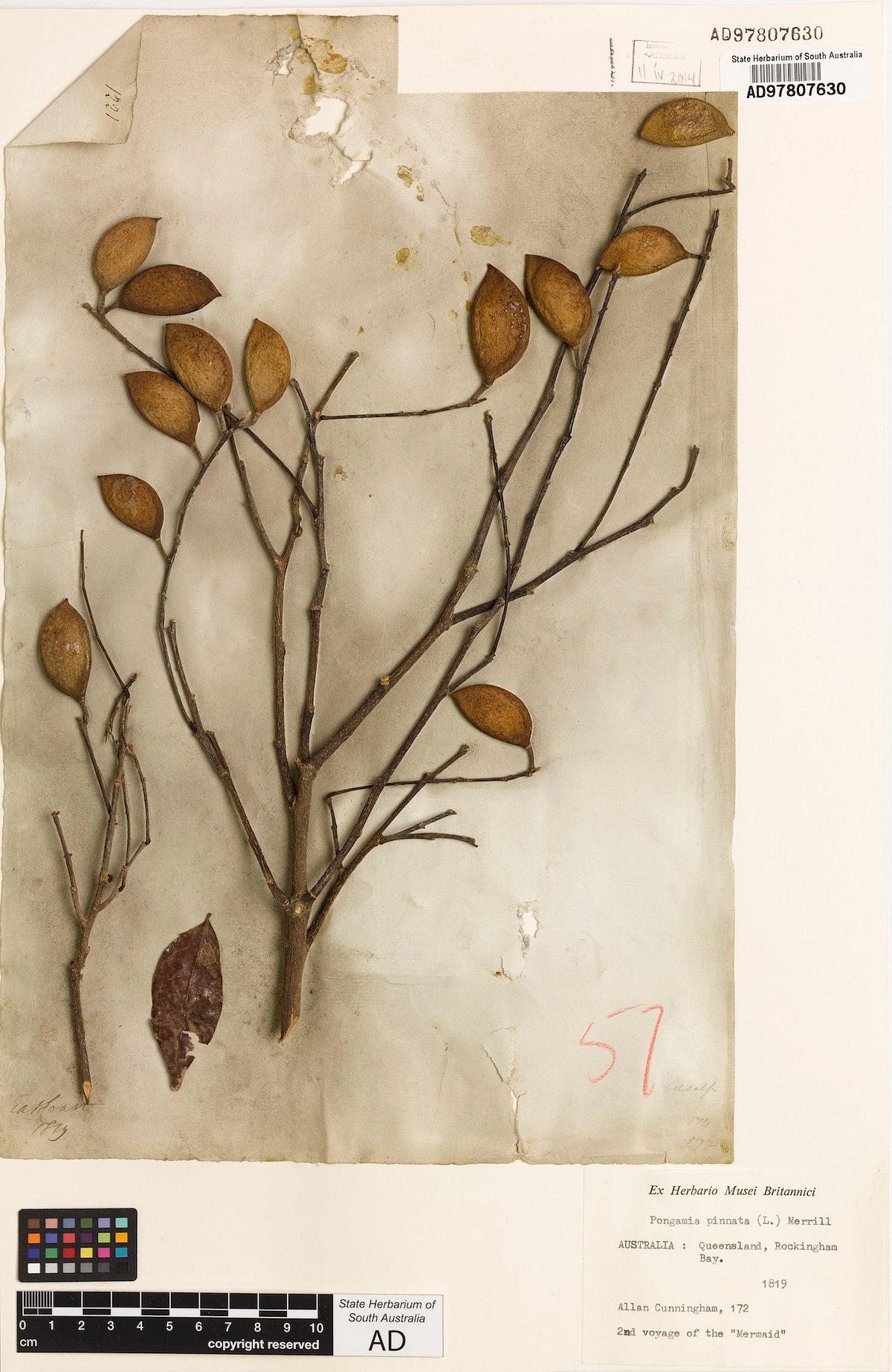
3. Cockie’s tongues (Templetonia retusa)
This one dates back to the early 1800s when Scottish botanist Robert Brown, on Matthew Flinders’ Investigator voyage, was exploring the southern tip of the Eyre Peninsula, in the area now known as Memory Cove, in Lincoln National Park.
At around the same time, eight crew members on the voyage were lost at sea. While the search was underway, Brown and seed collector Peter Good collected a number of plants in the area, including the Templetonia retusa.
This wasn’t a new discovery though, as it had already been found in Western Australia by French botanists, who then sent it back to Napoleon Bonaparte and his wife Josephine for their garden. When it started flowering in their glasshouse in 1803, it was described as a new species – Rafnia retusa.
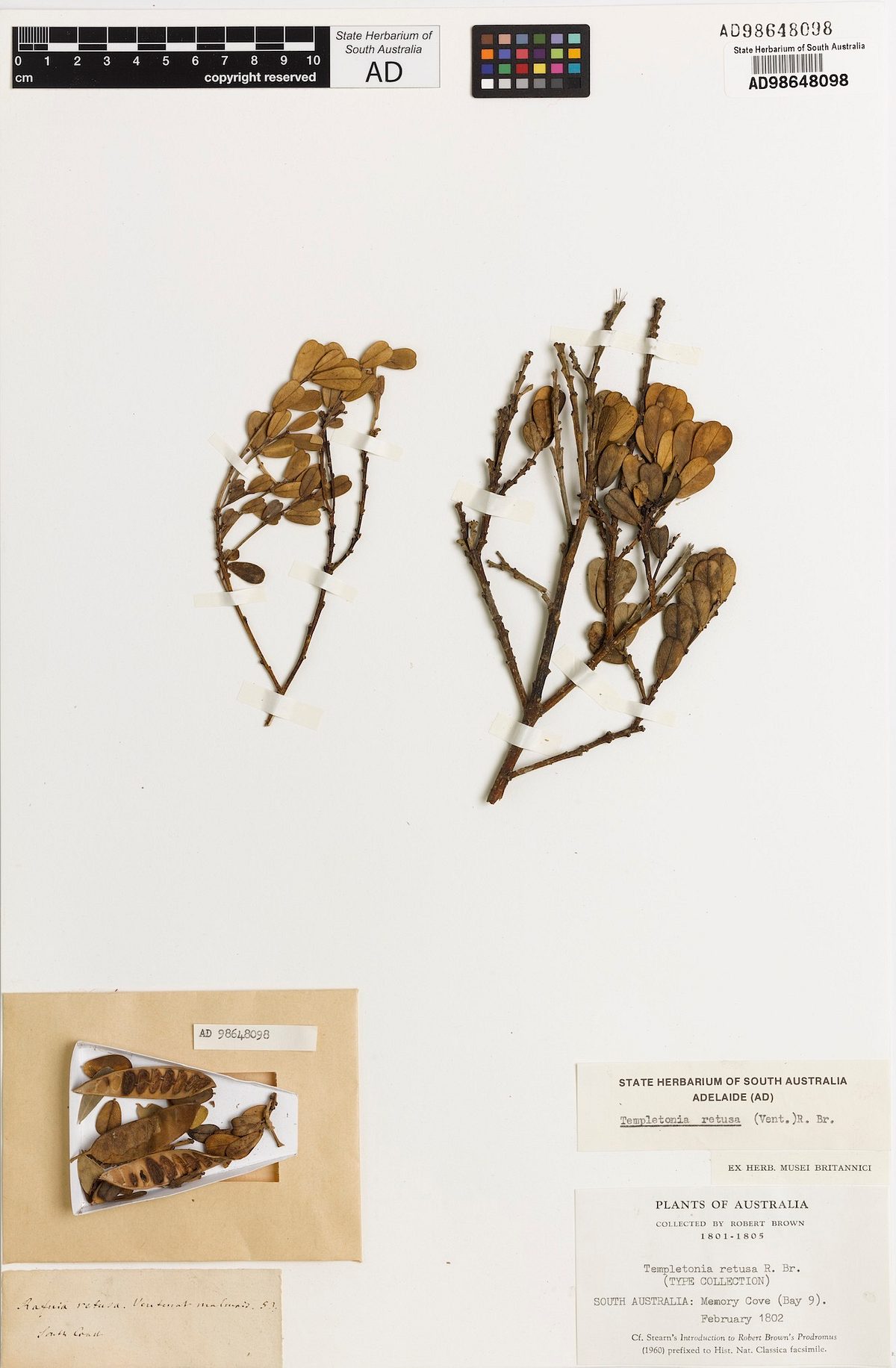
4. Dwarf hakea (Hakea rugosa)
The dwarf hakea was also collected by Robert Brown near Port Lincoln, in February 1802. The dwarf hakea has terete leaves topped by a spine, and belongs to a group of Hakeas often called ‘needle-woods’ because they are so prickly and they all look the same if there are no flowers and fruits.
When Brown collected this specimen at Port Lincoln he also collected two other Hakea species with similar leaves (Hakea vittata and Hakea cycloptera) and just a few days later he collected another (Hakea leucoptera) from his climb up Mount Brown.
The red ‘Type’ label on this herbarium sheet indicates that this is the actual specimen that the name Hakea rugosa is based on or described from, which makes it extremely valuable.
This is a relatively common species in southern SA, from Eyre Peninsula through to western Victoria. Hakea fruits are a favourite food of Yellow-tailed Black Cockatoos.
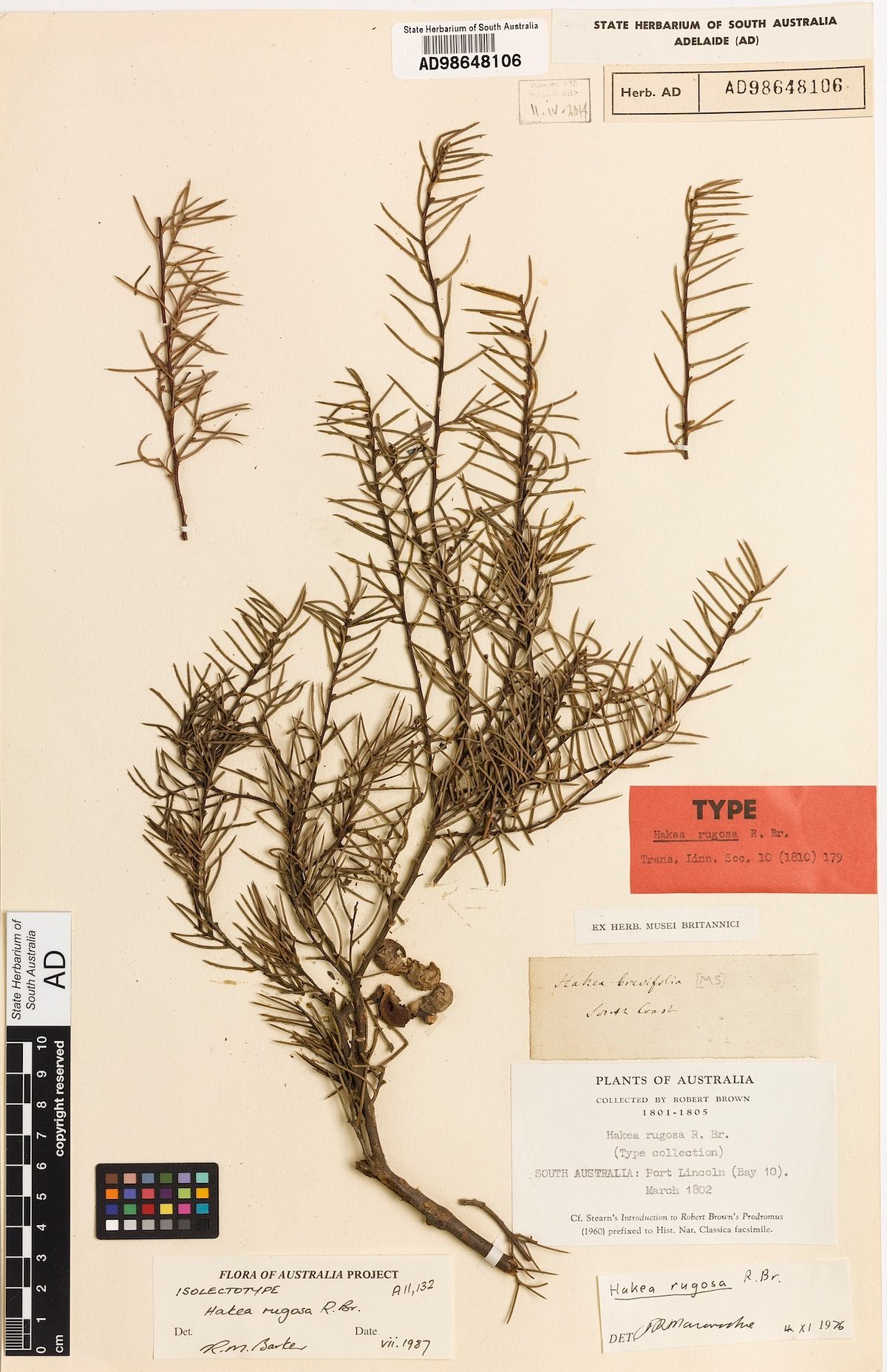
5. Crepe fern (Todea hymenophylloides, now known as Leptopteris hymenophylloides)
While not an Australian discovery, this crepe fern is a beautiful specimen both for its pristine preservation and the rich history behind it.
It was discovered in New Zealand way back in 1769 during Cook’s first voyage, where he visited the land of the long white cloud on the way to Australia.
The species is only found in New Zealand, and in the 1800s was often framed and displayed.
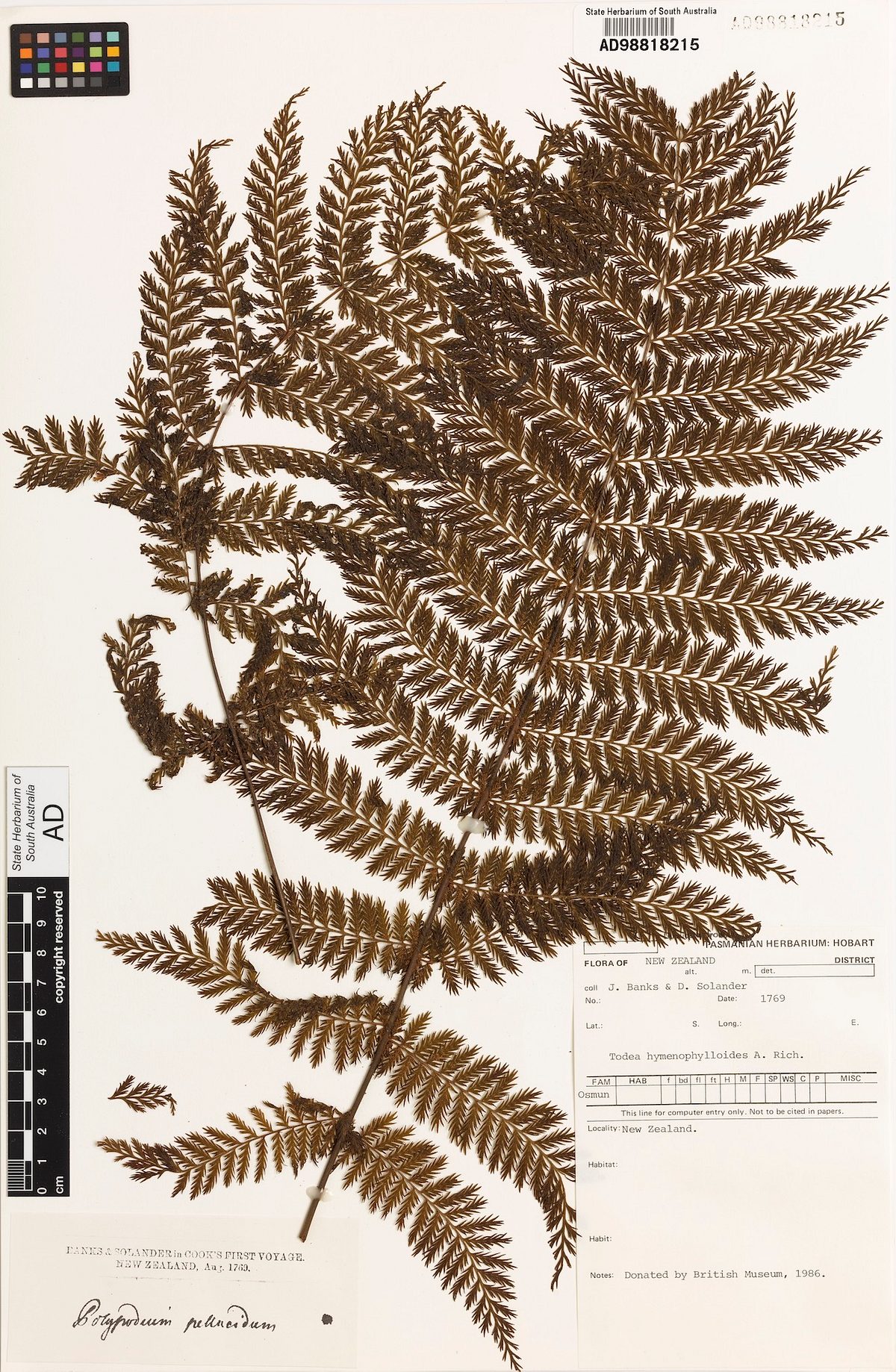
Embrace South Australia’s roots and learn more about the history of our environment and special places this May, duringSouth Australia’s History Festival.





